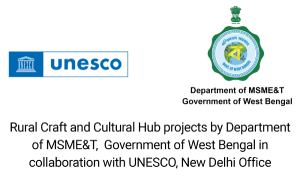Gomira (locally known as Mukha Nach) performances or Palas (musical folk theatres), are ritualistic dances. The performers treat each mask philosophically, by considering it as the Mukha (face), rather than a Mukhosh (mask) – the belief being that it comes alive as soon as one puts it on. Traditionally, the Rajbanshi community is engaged in the dance. There are no fixed dates for organizing these dances, but each village organizes at least one Gomira dance during the months of Chaitra – Ashad (April – July) according to their convenience, at a central location which is usually the village temple. The dances are organized to appease the village deity, Goddess Chandi and usher in her blessings.
The performances provide them with livelihood support, however minimum. The youth in the region are taking a renewed interest in pursuing and promoting the tradition; a positive angle that can keep the tradition alive.
A typical Mukha performance is a combination of instrument playing, singing and dance wearing the masks. There are generally 7 instrument players with 7 dancers, 2 singers, 2 helpers at the backstage. The instrument players are at the back while the dancers dance in the foreground. The dance starts with a musical prelude followed by Vandana, or the evocation of the Goddess, and the main dance part. These dances are performed on the ground and do not need a stage. The spectators typically stand in a semi circle. Though Mukha Naach (Gomira dance) has a mythological link but the exact origin of this dance form is not traceable and hence is a form associated with the traditional past of the region.
Total 75 Mukha dance artists from Dakshin Dinajpur are covered under the RCCH II initiative.



